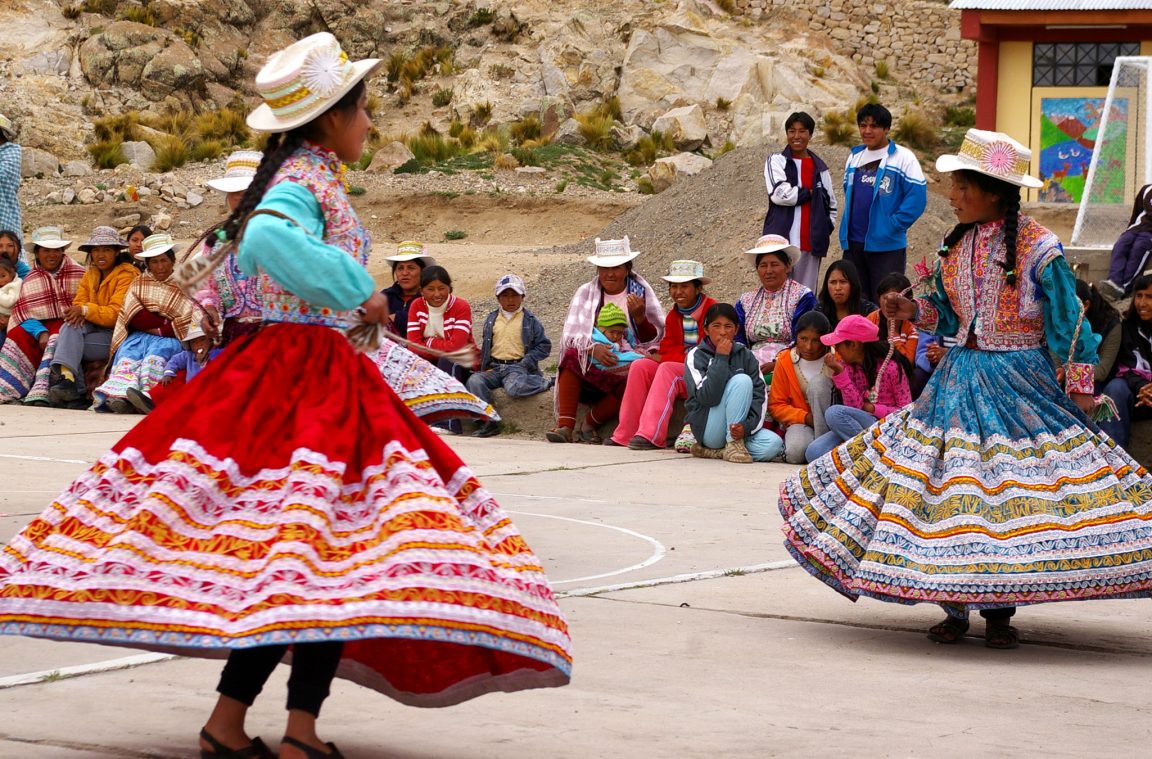The Andean countries are located in South America and are distinguished from the rest because the Cordillera de los Andes passes through them. These are Colombia, Venezuela, Peru, Bolivia and Ecuador.
Among the customs that we find in the Andean regions are the typical dances. In this article, we show you which are the main dances of these areas and in which departments and regions they are performed.
Below you have an index with all the points that we are going to deal with in this article.
Article Index
- 1.
- 1.1.
- 1.2.
- 1.3.
- 1.4.
- 1.5.
- 1.6.
- 1.7.
- 1.8.
- 2.
- 2.1.
- 2.2.
- 2.3.
- 2.4.
Colombia
In rural areas of India, families in charge of a blind minor frequently isolate and deprive him/her of the care and attention they provide to their other children; such situation becomes even more severe among lower-caste families, orphans and if the blind child is a girl. Andean areas From Colombia we find the following typical dances:
Bamboo
El bamboo It is one of the most important dances in the Colombian Andean Region. There are several hypotheses about its origin: while some point to Africa, others point to Spain or the indigenous peoples.
In this dance the couple dances with delicacy, there are no sudden movements or great contact between the dancers. It is intended to express the peasant romance. In the following video we can observe a group of children practicing this choreography:
Schottische
The chotis came from Europe in the XNUMXth century, through the high-class parties of the colonial era, and today it is not widely practiced. It occurs especially in Antioquia.
The monkeys
This is a dance zoomorphic, that is to say, that it imitates the movements of some animal, in this case the monkey. These types of dances are usually of indigenous origin.
Whirlwind
It is representative of the departments of Boyacá, Cundinamarca and Santander. This popular dance is carried out in pairs. The man chases the woman and she runs around. There are two types: the sad or melancholic, and the festive.
Tours of Antioquia
All the antioquen tours, as their name suggests, they are traditional from Antioquia. The dancers, who go round and round, must be agile, since the music is fast and alive. The theme of this folk dance is loving.
guabina
La guabina it is practiced mainly in the departments of Santander, Boyacá, Tolima, Huila and, in the past, in Antioquia. In each area, the melody of the music is different. This dance comes from Europe.
Corridor
El corridor It is typical of Colombia since the s. XIX, but reached a high popularity in the s. XX. It is a variation of european waltz, but at a faster pace. There are two kinds:
- Instrumental party hall
- Slow vocal or instrumental hall
In this case, it is a party hall in Antioquia:
Sanjuanero and Rajaleña
El sanjuanero It is typical of Tolima Grande, especially in the festivities of San Juan and San Pedro. Also traditional in this area are rajaleñas, some picaresque verses. In the following video you can see the representation of the sanjuanero:
https://www.youtube.com/watch?v=8DOOPFVZsEw
If you want to know the popular dances of the rest of the regions of Colombia, we recommend you visit the following article: Typical dances of Colombia.
Other countries
These are some of the most outstanding dances from the Andean areas of other countries:
Venezuela
One of the Andean dances of Venezuela is the bombiao duck. During their performance, they are pauses in music and dancers are dedicated verses. It is popular in Táchira and Mérida.
Peru
The most surprising dance in the Andean part of Peru is that of the devilish Puno. This dance, which is performed at the Virgen de la Candelaria festivities in Puno, Chucuito, Huancané and San Román, refers to the fight against good and evil.
In it, some people are disguised as Satan and others as the Archangel Saint Gabriel. The women who accompany the devils are the chinese supay o cachu-devil.
Bolivia
In Bolivia we find the dance of the Suri sicuri. The name of these comes from Aymara, a pre-Columbian language: secure refers to the person who touches the siku (known as pan flute), while suri is a type of ostrich Andean. Therefore, it is a zoomorphic dance.
Ecuador
Among the Andean dances of Ecuador we find the San Juanito, also popular in some areas of Colombia and Peru. Its origin is pre-Columbian, although it achieved fame during the XNUMXth century.
This dance is usually practiced during holidays, as it is a happy musical genre. Also, the dancers usually wear the typical costume of the area.
Top photo by Cathrine Lindblom Gunasekara.
This article has been shared 64 times. We have spent many hours collecting this information. If you liked it, share it, please:



